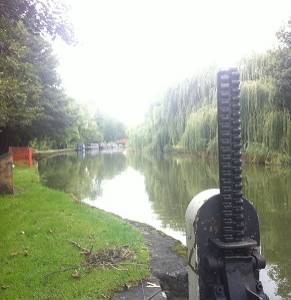
How to Learn About Locks Without Even Buying a Boat
Buying a second hand canal boat can be a big investment, but there’s no reason why your current finances should prevent you from boating right now. At popular tourist destinations such as Camden lock there is never a shortage of spectators watching with interest how a narrowboat crew manage to navigate through a lock. If you too have enjoyed gongoozling at the lock-side wishing you could take part in the action then this article offers three ways to learn about locks: And they won’t cost you a thing!
1) Get the Free E-book
There are detailed instructions on how to operate a lock in The Boater's Handbook on the IWA website.
This is a free guide for the first time boater and includes information about boat handling, boating safety, and good boating etiquette. However, you’ll still need to be shown the ropes by someone with experience.
2) Volunteer Lock Keeper
You can gain practical experience by becoming a volunteer lock keeper for the Canal and River Trust. No experience is needed as full training is given. Last year 380 volunteers helped out in the main boating season between March and October. Each volunteer commits to one or two days a week. If you enjoy meeting new people it can be really good fun – and while you help them you can quiz passing boaters with any questions you have about becoming a boat owner yourself!
To find out more check out this article where TV’s Penny Smith voices her support for volunteer lock keepers.
The Trust are also welcoming volunteers to help clear up after the recent severe weather and flooding.
3) Community Boating
Another way to get hands-on boating experience is to volunteer with a community boating project. The NCBA is an umbrella organisation supporting and representing inland waterway community boating organisations.
There are over 100 member organisations so it should be easy to find a community boat near to where you live. The NCBA also offers a wide variety of training courses from complete beginner to senior trainer. Louise Yeoman is a nurse who lives on a narrowboat on the outskirts of London. Read about her enjoyable experiences as a voluntary steerer with Hillingdon Narrowboats Association on the NCBA blog.
Once you’ve been shown how, you’ll realise that using a lock is a simple step by step procedure, but it can be dangerous for a crew unfamiliar with the process. It’s important to take your time and to stay alert. The skipper should remain aware of the stern and the cill when travelling downhill as this can quickly sink a boat if the boat is in the wrong position when the water level drops. But with a 70ft boat you’ll also want to watch the bow – a front fender could get caught on the lock gates. It’s a good idea to agree a signal for ‘close the paddles’ in case this must be done quickly in an emergency.
If you’d like weekly tips and advice about boating and canals direct to your inbox why not subscribe to our blog? We never share or sell email addresses – this link is simply an automated way to get a heads-up when we publish something new!
Image credit: www.narrowboatwife.com
You may also like:
Living on a Boat: The Boatshed Guide (free) / How to Sell a Boat: The Ultimate Guide / How to Buy a Boat: The Ultimate Guide / The best blog articles of 2013/ Don’t miss: The Boatshed Grand Union Daily/ A slideshow of our boat of the moment./More articles.
New here? Follow our blog on Facebook or Twitter and share your waterways pictures and news.
Never miss an article: Sign up and get the latest blog articles sent directly to you.

